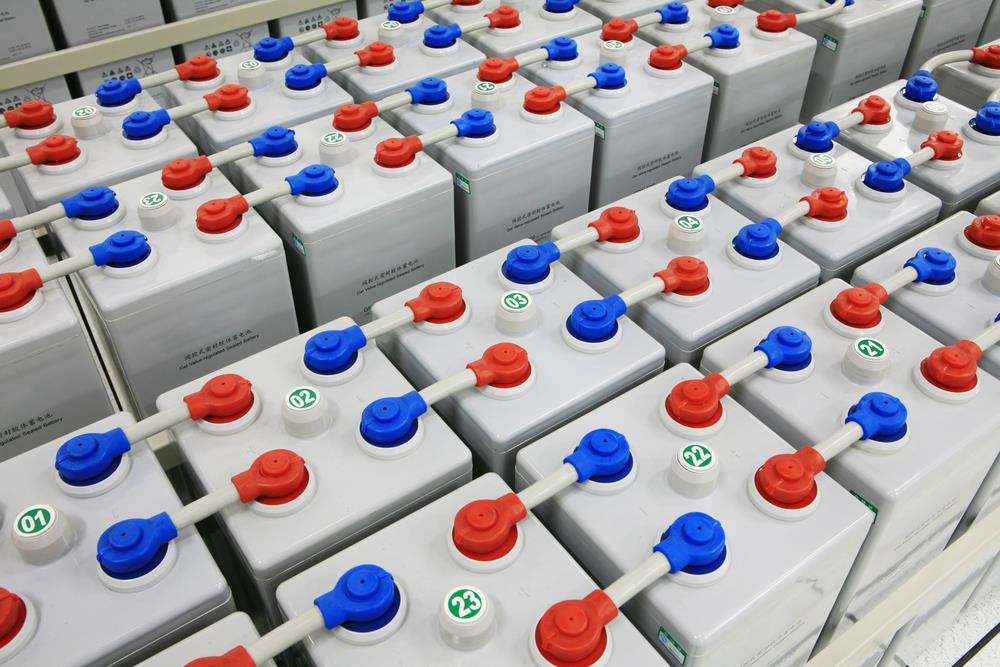Cathode
During discharge, the cathode undergoes reduction (or gain of electrons) and the lithium ions accumulate in the cathode. On charging the battery the movement of the electrons is reversed and the cathode regains its higher potential. The cathode (or the positive terminal) remains at higher potential during discharging of the battery.
Cathodes have always been thought of as the primary factor related to the high capacity and superior power delivery of lithium-ion batteries. Lithium metal oxides are being used ubiquitously as the traditional cathode material for lithium-ion batteries. It is generally observed that having a cathode capable of enhancing the capacity of a battery has a detrimental effect on its cycle life. A balance between the capacity and cycle life of the battery will lead to more efficient batteries in the future.
Lithium cobalt oxide (LCO) is one of the most widely material for cathodes. Although LCO remains the most common cathode material, its total market share has been gradually eroded by other materials due to considerations of cost and associated safety and environmental hazards and hence, various other cathode materials have been developed. For materials to be used as LIB cathode, the Li ions must be able to diffuse freely through the crystal structure.
In this section

The morphology of the crystal structure, being one, two or three-dimensional, determines the number of dimensions in which Li-ions are able to move. Cathode materials currently in use or under development are described below in accordance with the following three morphologies:
Olivine Structure Materials:
Lithium Iron Phosphate (LFP) is the most well known of the olivines, which restrict Li-ion diffusion to a single linear dimension. Although low ion mobility poses an inherent performance disadvantage coupled with a low-discharge voltage, nevertheless, there has been some commercialization of olivine cathode materials due to the outstanding stability they offer.
Layered Rock Salt Structure Materials:
This is a group of compounds with two-dimensional crystal morphology. While the most common example is LCO, Lithium nickel oxide and Lithium manganese oxide are also well known. Although the latter two compounds have proved to be unsuitable for use as LIB cathode in their simple form, performance improvements have been achieved by combining them with other elements to form complex oxides such as Lithium Nickel Manganese Cobalt Oxide (NMC). The cathode combination ratio is usually one-third nickel, one-third manganese and one-third cobalt, meaning that the raw material cost is lower than for other options, as cobalt on its own can be quite expensive. NMC’s in the same cell optimized for specific power have a capacity of only about 2,000mWh but deliver a continuous discharge current of 20A. Also, NMC’s have a very low self-heating rate. Like other varieties of lithium-ion batteries, NMC batteries can have either a high specific energy or high specific power. NMC’s have a high number of charge and discharge cycles (about 5000 cycles). This battery is most common in power tools and in powertrains for vehicles.
NCA is a combination of a lithium, nickel, cobalt, aluminum oxide. Typically, lithium-ion NCA batteries use a combination of 80% nickel, 15% cobalt and 5% aluminum. The anodes in these traditional lithium-ion batteries are usually a graphite combination, which acts as a host for the lithium ions. The addition of the aluminum to the NCA battery makes it more stable. NCA batteries are used for high-energy applications such as backup power by utility companies. These batteries have about 60-70 cycles (charge and discharge) per year and a total of about 1500 cycles, but if used at about 80% efficiency higher number of cycles can be obtained.
LMR-NMC:
Lithium and manganese rich transition metal oxides (LMR-NMC) are being extensively studied at various laboratories worldwide for use in high-energy density lithium-ion cells. These oxides are often described as xLi2MnO3• (1-x) LiMO2 (M = Ni, Co, Mn), i.e., as structurally integrated composites of Li2MnO3 and a Li-stoichiometric transition-metal bearing layered oxide. To achieve high-energy densities (>900 Wh-kg−1) the oxides are cycled at high voltages (>4.5 V vs Li/Li+). On extended cycling, however, cell energy decreases because of increasing cell resistance, loss of mobile lithium, and a continuous reduction in the average open circuit voltage of the oxide (termed “voltage fade”). In addition to reducing usable energy voltage fade also complicates state-of-charge (SOC) determination, which is required for effective cell management. Voltage fade is often attributed to the Li2MnO3 component in the LMR-NMC oxides: removal of lithium and oxygen from this component during oxide activation is believed to trigger this fade. Voltage fade also occurs in lithium excess layered oxides cycled well below the activation plateau, and the crystal structure of the Li2MnO3 component remains unchanged during electrochemical cycling in the 2–4.1 V vs. Li/Li+ range.
Spinel Structure Materials:
LMO is the most significant compound in this three-dimensional category which enables Li ions to diffuse in all three dimensions. Although spinels provide lower discharge capacity than layered rock salt materials, they do enjoy advantages in terms of lower cost and high stability and are therefore gaining attention in emerging medium- and large-scale LIB applications
The total market demand for cathode materials for all applications of Li-ion batteries was approximately 140,000 tons in 2015 and the market witnesses a sustained growth with compound annual growth rate (CAGR) amounting to 16% between 2005 and 2015. It is estimated that approximately 25% of the total global demand of the cathode active materials were used in Li-ion batteries for HEVs, PHEVs and EVs. The market for cathode active materials is expected to grow from 140,000 tons in 2015 to 400,000 tons in 2025. However, the potential of technical breakthrough that leads to use of different cathode materials/chemistry, intensive competition and government policy interference will continue to affect the global cathode manufacturing sector.